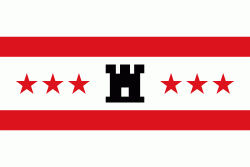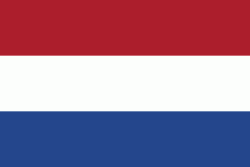Drenthe (Provincie Drenthe)
 |
 |
Drenthe has been populated for 15,000 years. The region has subsequently been part of the Episcopal principality of Utrecht, Habsburg Netherlands, Dutch Republic, Batavian Republic, Kingdom of Holland and Kingdom of the Netherlands. Drenthe has been an official province since 1796. The capital and seat of the provincial government is Assen. The King's Commissioner of Drenthe is Jetta Klijnsma. The Labour Party (PvdA) is the largest party in the States-Provincial, followed by the People's Party for Freedom and Democracy (VVD) and the Christian Democratic Appeal (CDA).
Drenthe is a sparsely populated rural area, unlike many other parts of the Netherlands; except for the small cities of Assen (pop. 67,963 ) and Emmen (pop. 107,113), the land in Drenthe is mainly used for agriculture and it has a notable amount of forests and nature.
The name Drenthe is said to stem from thrija-hantja meaning "three lands".
Drenthe has been populated by people since prehistory. Artifacts from the Wolstonian Stage (150,000 years ago) are among the oldest found in the Netherlands. In fact, it was one of the most densely populated areas of the Netherlands until the Bronze Age. The most tangible evidence of this are the dolmens (hunebedden) built around 3500 BC. 53 of the 54 dolmens in the Netherlands can be found in Drenthe, concentrated in the northeast of the province. In 2006, the archaeological reserve of Strubben-Kniphorstbos, located between Anloo and Schipborg, was created to preserve part of this heritage.
Drenthe was first mentioned in a document from 820, it was called Pago Treanth (Drenthe district). In archives from Het Utrechts Archief, from 1024 to 1025, the "county Drenthe" is mentioned, when Emperor Henry II gave it to Bishop Adalbold II of Utrecht.
After long being subject to the Utrecht diocese, Bishop Henry of Wittelsbach in 1528 ceded Drenthe to Emperor Charles V of Habsburg, who incorporated it into the Habsburg Netherlands. When the Republic of the Seven United Provinces was declared in 1581, Drenthe became part of it as the County of Drenthe, although it never gained full provincial status due to its poverty; the province was so poor it was exempt from paying federal taxes and as a consequence was denied representation in the States General. The successor Batavian Republic granted it provincial status on 1 January 1796.
Shortly before the outbreak of the Second World War, the Dutch government built a camp near the town of Hooghalen to intern German Jewish refugees. During the Second World War, the German occupiers used the camp (which they named KZ Westerbork) as a Durchgangslager (transit camp). Many Dutch Jews, Sinti, Roma, resistance combatants and political adversaries were imprisoned before being transferred to concentration and extermination camps in Germany and occupied Poland. Anne Frank was deported on the last train leaving the Westerbork transit camp on 3 September 1944.
In the 1970s, there were four hostage crises where South Moluccan terrorists demanded an independent Republic of South Maluku. They held hostages in hijacked trains in 1975 and 1977, in a primary school in 1977, and in the province hall in 1978.
Map - Drenthe (Provincie Drenthe)
Map
Country - Netherlands
 |
 |
The four largest cities in the Netherlands are Amsterdam, Rotterdam, The Hague and Utrecht. Amsterdam is the country's most populous city and the nominal capital. The Hague holds the seat of the States General, Cabinet and Supreme Court. The Port of Rotterdam is the busiest seaport in Europe. Schiphol is the busiest airport in the Netherlands, and the third busiest in Europe. The Netherlands is a founding member of the European Union, Eurozone, G10, NATO, OECD, and WTO, as well as a part of the Schengen Area and the trilateral Benelux Union. It hosts several intergovernmental organisations and international courts, many of which are centred in The Hague.
Currency / Language
| ISO | Currency | Symbol | Significant figures |
|---|---|---|---|
| EUR | Euro | € | 2 |
| ISO | Language |
|---|---|
| NL | Dutch language |
| FY | West Frisian language |



























